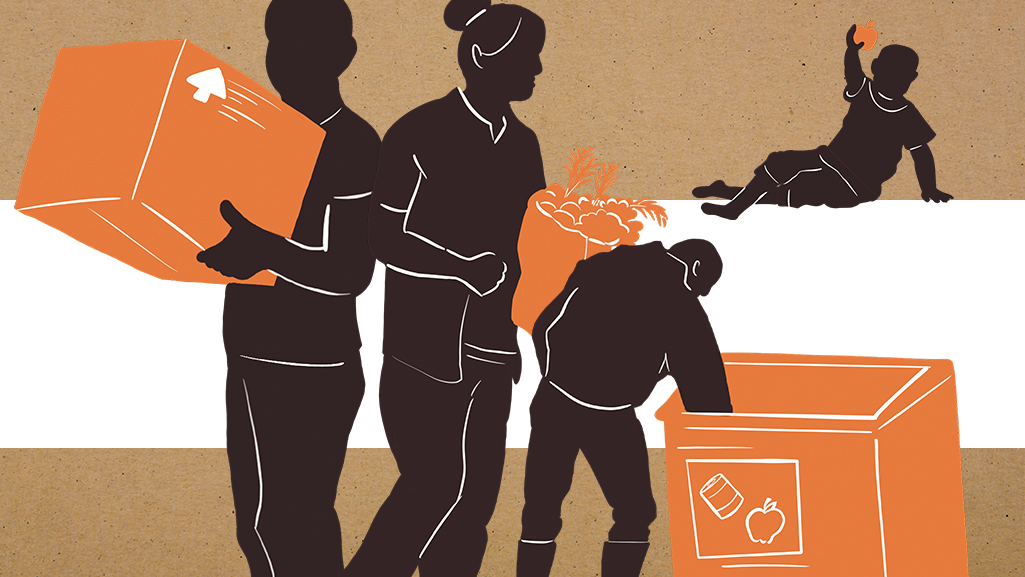Life is full of ups and downs. Sadly, the ratio between the two isn’t always even for everyone. When people need support or a helping hand, they often turn to various nonprofit organizations within their community.
Giving to these organizations is an important way for us to stay in tune with those less fortunate.
Finding a Cause
According to the National Center for Charitable Statistics, there are over 1.5 million nonprofit organizations in the United States.
Obviously, that’s a large number, and there are most likely tons of causes that appeal to each and every one of us.
Not every charitable organization is created equal though. Luckily, there are various sources to compare and contrast the effectiveness of nonprofits.
Kellie Shaw is a senior relationship manager for United Way of Greater Rochester (UWGR), and as an RIT alum, she is also heavily involved with RIT’s United Way Campaign.
“If you’re interested in how a charity ranks, you can look at the Better Business Bureau (BBB) or Charity Navigator. These sites break down and answer questions like ... how much of a dollar given actually goes towards programming,” she said.
According to the BBB's Standards for Charity Accountability, 65 cents of every dollar should go towards a charity’s activities for it to pass that standard. This is only one of 20 standards that the BBB checks for when examining a nonprofit.
On a more basic level, it’s important to make sure that the organization you’re looking to support is an accredited 501(c)(3). This is the mark of approval provided by the Internal Revenue Service for legitimate nonprofit organizations.
Making a Difference
While it’s important to examine a nonprofit’s efficacy and background, it is also just as worthwhile to simply look at the real-life impact it has on your area.
Matt Ryan is a fifth year Industrial Systems and Engineering major. He’s also a former RA and current coordinator for RIT FoodShare.
“One of the most humbling things you can do is actually spend time talking to people and humanizing the struggle that comes with food insecurity,” he said.
Along with seeing how these struggles affect people in your community, learning a little about your local charity’s day-to-day operations can also be extremely helpful, as it gives you a better idea of what they need to thrive.
“[RIT FoodShare] is really championed by Residence Life. It was started almost six years ago as an on-campus initiative to help reduce food waste,” Ryan said.
Before expanding its operations, the main goal of RIT FoodShare was to connect those who are food insecure with the abundance of waste left behind by on-campus events. This took place through the, still active, RIT FoodShare Facebook group.
Today, RIT FoodShare operates the RIT FoodShare Center. Located in Riverknoll, in pre-COVID-19 times, any member of the RIT community would be able to walk in, no questions asked.
“They get to choose a certain number of items, and the choices they make are pretty much up to them. We want it to feel like the grocery store,” Ryan said.
Currently, the RIT FoodShare Center is operating on a bag pickup model. Members of the community send in an online request with their food preferences and select a time slot for pickup. From there, those requests are packed by RIT FoodShare team members.
Help Is Key
RIT FoodShare, like most other nonprofits, operates fully through donations.
"A lot of the time, if you can donate financially, that’s better than going to the store and buying beans with your own money. We have the connections to get much better prices for the food that we need the most,” Ryan said.
As college students with little expendable income, this may be a tough pill to swallow, but it’s also important to change how you look at monetary donations.
“People think they have to give 100 dollars to make a difference, but at the United Way we emphasize the power of collective giving. Even if you only give a dollar a week or give up one coffee a month, you’re still making an impact,” Shaw said.
"Even if you only give a dollar a week or give up one coffee a month, you’re still making an impact.”
According to FoodLink, a food bank that operates throughout the Greater Rochester and Finger Lakes region, one dollar is equal to three meals.
That dollar a week or cup of coffee will end up creating 12 meals, which may feel small on the surface but will feel extremely meaningful to those who are supported by them.
If donating money really isn’t an option though, think about ways you can provide your time and talent to an organization.
Most people think of volunteering as a one-off thing, but often, nonprofits are looking for repeat volunteers who can help them run their day-to-day operations.
These people are usually able to understand the organization better and more efficiently and effectively complete tasks.
Organizations also often need people skilled in areas such as finance, marketing, web development, photography and various other fields to complete special tasks that need done infrequently.
“That can be stuff that’s really expensive for nonprofit organizations to pay for, and a lot of people don’t think to volunteer their talent in that way,” Shaw said.
UWGR runs multiple programs to make giving, both donations, through ROC the Day, and volunteering, through Volunteer United, easier for individual nonprofits and their donors.
Organizing fundraisers and volunteers are both very time-consuming endeavors, so by providing these services, UWGR makes it easier for nonprofits to focus on their charitable activities.
While we often believe that nonprofits are the ones that do all the giving, it’s important to note that they would be nothing without the community members that support them.
So if you’re on the up and up, think about what you can do to help them, and by extension, the people and causes they support, achieve their goals. A little caring can go a long way.








